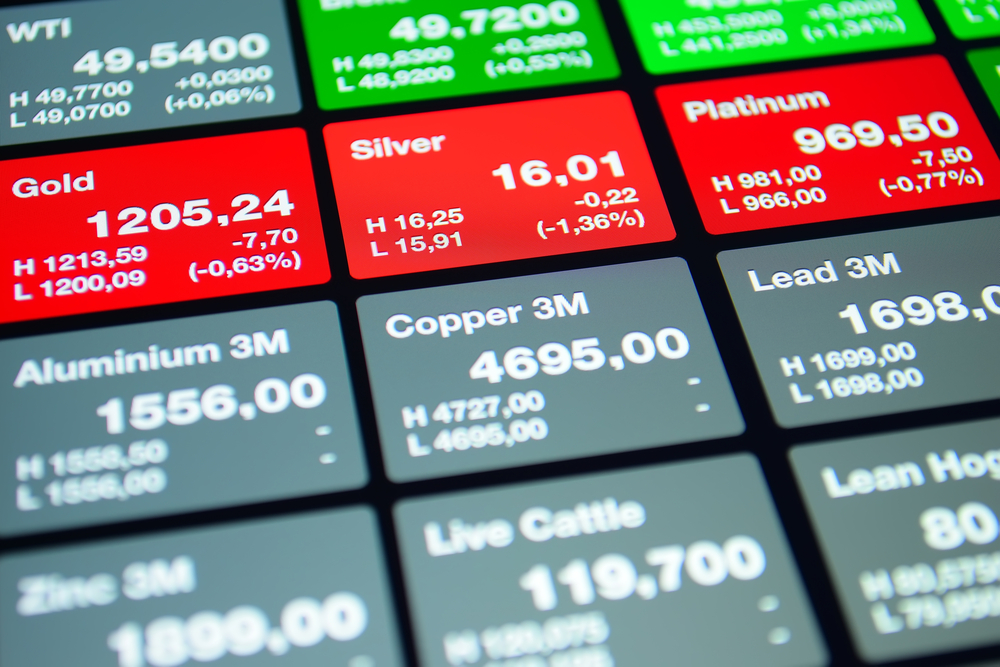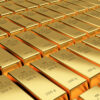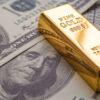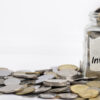Many seasoned investors include metals in a balanced portfolio since they are often thought of being inflation hedges. Due to the underlying support that their scarcity or limited supply provides to their value, metals like gold and silver may also be considered safe-haven investments.
Even though their prices are still susceptible to currency changes, metals trading has another advantage over other forms of investing in that it protects against inflation.
Trading in Precious Metals
Gold is the precious metal most frequently used for this purpose. Precious metals have long been utilized as a store of wealth and a medium of exchange between dealers. Gold and other precious metals may be purchased and traded in a variety of ways nowadays.
Physical Metal
Direct physical metal investment is a well-liked entry point to these markets. Bars are available in a variety of sizes to meet the demands of investors. Investors seeking a direct investment in real metals can purchase coins in addition to bars.
Several private markets and organizations encourage this type of investment, and numerous nations produce coinage made of gold and silver. Utilizing specialized vaulting and custody arrangements, safe transit, and insurance coverage is frequently required when taking direct ownership of precious metals.
There is a mechanism for indirect investment in addition to direct investment. Through a bank or other middleman, precious metals can be purchased on an unallocated basis. While the buyer possesses the metal on the account, the bank or middleman keeps possession of it.
Unallocated metal ownership involves a degree of counterparty risk, but it also offers a more simple method of carrying out deals: exchanges are carried out by the banks shifting balances between accounts.
Non-Physical Metals
Investing in precious metals through a mutual fund or an exchange-traded fund is a popular alternative. This type of investing is indirect since investors put their money into a fund, which then invests in metal.
The fund recovers its expenses through a management fee. Equity in a fund is exchanged on a stock exchange when it is an exchange-traded fund. All of these items’ trade agreements make extensive use of technology.
The use of blockchain technology to enable precious metal ownership and efficient transfer is a recent concept that is beginning to take shape.
Types of Metals
There are several metal types that investors may invest in. These are often classified as either “precious” or “base.” Rare, metallic elements that have intrinsic worth and occur organically are known as precious metals.
They often don’t corrode, oxidize, or tarnish naturally. Gold, platinum, silver, and palladium are the four primary precious metals. All four are used in jewelry but also have a variety of other uses.
Throughout human history, precious metals have been utilized for money and jewelry. More recently, metals like gold have been employed in electronics like iPhones and computer software.
During periods of market turbulence, certain precious metals are seen as safe havens because they serve as tangible reservoirs of wealth. Base metals oxidize, tarnish, or corrode naturally. Copper, nickel, lead, and zinc are among the examples.
These materials are used in the creation of items like copper pipes and alloys like Nichrome, which combine chromium and nickel. Copper is a common material for sculptures. The famous Statue of Liberty, for example, gets its green color from corroded copper.
Metals For Trading
Gold, platinum, silver, and palladium are the four principal precious metals traded. All of these have a variety of uses, including those in electronic, medicine, and alloy industries, in addition to serving as historical money storage and being used in jewelry.
Gold
Since ancient times, gold has been featured in the manufacture of pricey things. Due to its conductivity, gold is now utilized in modern jewelry, home decor, cell phones, and PCs that we use daily. In times of market turbulence, many investors choose it as their safe-haven asset.
Platinum
Platinum is often used in the making of jewelry and medical devices in its purest form. It is, however, also commonly used as an alloy. Cobalt and platinum alloys are two ingredients used in magnets, for example.
It is also a component of certain chemotherapy drugs, specifically those used to treat lung cancer, ovarian and testicular carcinoma, and lymphomas.
Silver
Due to its anti-bacterial, malleable, and conductive qualities, silver is a widely utilized metal in the industrial sector. These enable a variety of uses for silver, such as water purification, batteries, and dentistry.
Palladium
Palladium and platinum are congeners, which indicates that they have shared ancestry, morphology, or applications. Catalytic converters for automobiles, which are crucial components in the conversion of hazardous gases, utilize over 50% of the overall palladium supply.
Catalytic converters are responsible for turning gases like CO (carbon monoxide) into other gases, including N (nitrogen), CO2 (carbon dioxide), and water vapor.
How to Trade in Metals
It’s crucial to keep in mind that dealing with these precious metals doesn’t necessarily call for the delivery or storage of physical metal bars or coins. Everything can be done online. Trading precious metals entails using financial derivatives, such as CFDs (contracts for differences), to speculate on price movements.
Financial institutions and investors enter into CFDs in which the investors stake a wager on the future value of an asset. Cash is used to settle the difference between the open and closing trading prices.
You have the choice of trading futures, spot prices, or options on precious metals. You won’t ever need to take physical delivery of the underlying assets, which are actual metal coins or bullion, because you’ll be trading on these values with CFDs.
A method of controlling exposure to the underlying market is offered through futures contracts. The futures contracts provided by trading platforms in the precious metal markets are a component of the larger worldwide market for precious metals.
They help the market with price discovery and transparency. Exchanges also provide options contracts on precious metals and precious metal futures. The variety of trading and hedging tactics available to investors is expanded by options contracts.






